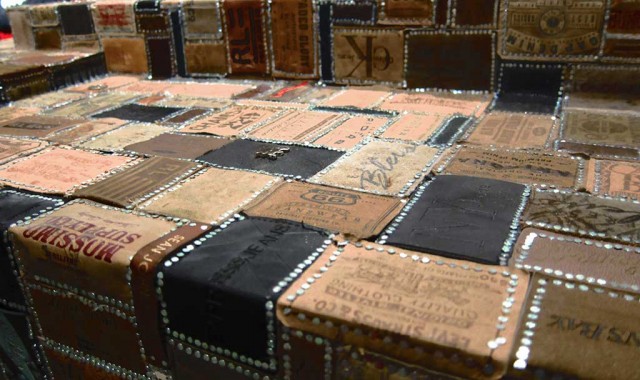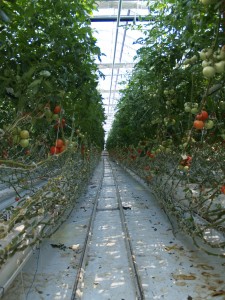The Lufa Farms greenhouse is a prototype: a 31,000 square-foot rooftop farm located in Ahuntsic-Cartierville in the north of the Island of Montreal. After four and a half years of aid from consultants, engineers, architects, plant scientists and farming experts, Lufa launched the reality of delivering over 25 types of fresh produce without the use of artificial pesticides, fungicides or herbicides to hundreds of urban dwellers in Montreal in 2011. One of the truly beautiful things about the Lufa Farms concept is its beginnings in every-day conversations about an every-day need: food – where was it coming from and how were people getting it? Lufa’s founder and president, Mohammed Hage wants to change the way Montrealers (and all urban-dwellers) acquire their food and what produce they’re consuming. While its chosen system of hydroponic agriculture is not considered organic, it has proved to be a highly efficient method for urban agriculture and provides the farm with further means of eco-efficiency by way of water management. Lufa avoids placing additional stress on the urban water supply by capturing rainwater and re-circulating all of the irrigation water. That’s the just the tip of the iceberg, this type of farm goes far beyond its fruits and vegetables in terms of its positive environmental benefits. Land previously lost to urban development is now being farmed again and the greenhouse concurrently helps to eliminate the urban heat island effect. Distance, time, and handling of food between farm and consumer are all minimized resulting in reduced total transportation costs as well as less greenhouse gas emissions. The result is highly nutritious and freshly picked vegetables brought into homes in place of shipped and artificially ripened produce. Lufa’s waste is minimized and actually turned into a social benefit as whatever produce isn’t sold is donated to various charities, organizations and the farm’s staff. Perhaps the most meaningful benefit of Lufa’s operation is that the consumer, even the most urban one, is now re-integrated into a relationship with a local farm. This type of project brings its collaborators, staff and customers closer to understanding where food comes from and can translate that experience to other situations and make further informed lifestyle and purchasing decisions that are grounded in sustainability.One of the truly beautiful things about the Lufa Farms concept is its beginnings in every-day conversations about an every-day need: food – where was it coming from and how were people getting it?
With the average population of its largest cities being close to 3.5 million, the potential for this type of project throughout North America is vast. Mr. Hage indicated that Toronto, Boston and Chicago are just some of the places that have shown interest in this project. As he said himself, “this is about feeding 7 billion people with food, not feeding them with plastic”. As Lufa begins planning its next project, a farm five times the size of the current greenhouse, everyone from paying customers to urban planners and politicians should consider what practical examples related to sustainable urban and agricultural development exist in their own communities.

The greenhouse is divided into separate climatic zones. Zone 1 is reserved for herbs, arugula, lettuce, swiss chard and bok choi
Check out more photos from our visit to Lufa Farms on Flickr!










